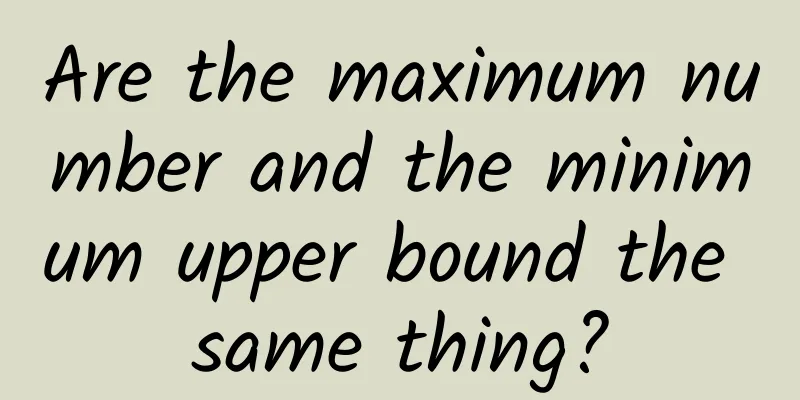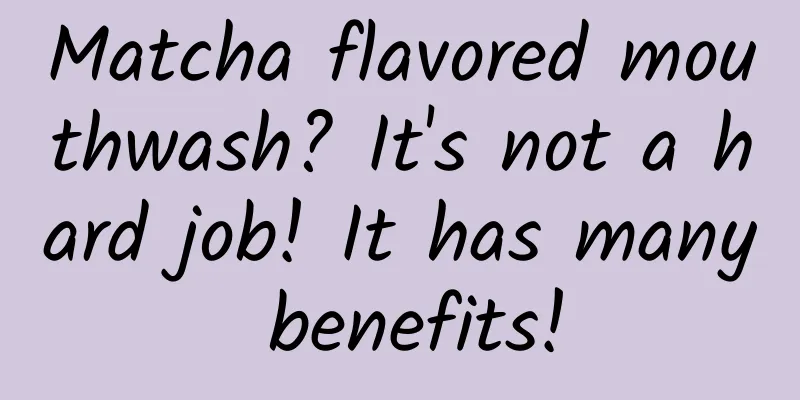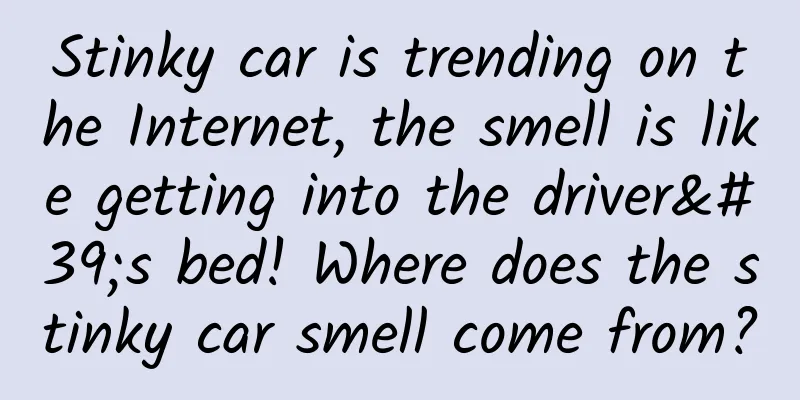Are the maximum number and the minimum upper bound the same thing?

|
Einstein once said that if you forget everything you learned in school, what remains is education. This sentence emphasizes that the core value of education does not lie in specific knowledge, but in the thinking ability accumulated in the process of careful thinking and discernment. Learning mathematical concepts well can help us hone our logic, sharpen our eyes, and stay sober and calm when the world is in turmoil. This article is aimed at beginners. It uses simple language to explain the connotation and extension of the important concept of calculus "exact limit", clarifies the difference and connection between it and the "maximum number", and touches on the cornerstone of limit theory - the completeness of real numbers. Written by Ding Jiu (Professor of Mathematics at the University of Southern Mississippi) The maximum number of "unreliable" Dear readers, I give you an interval (0, 1), which is the set of all positive real numbers less than 1. I want to ask you a question: Does this set of real numbers have a maximum number? If this question is difficult to answer, then I will change the question and change the pair of parentheses representing the open interval to curly braces. That is, I will first ask you: Does the set {0, 1} have a maximum number? You will definitely be able to answer me immediately: Yes, the largest number is 1. This correct answer also shows that you clearly know the definition of "largest number", or at least for this extremely simple example, you understand what "largest number" is. Here is its strict definition: Let A be a set of real numbers. If a real number M satisfies two conditions: (i) M is a number in A; (ii) for any number a in A, the inequality a≤M holds, then M is called the largest number in A. If you don't like to use the generalized inequality symbol "≤", we can also change condition (ii) in the definition to its equivalent (ii)': for all other numbers a in A, the strict inequality a<M holds. A similar method can be used to define the smallest number in a number set. However, this article mainly deals with the largest number, and all conclusions about it can lead to corresponding conclusions about the smallest number, because the largest number and the smallest number have such a relationship: the largest number of the number set A (if it exists) is the opposite of the smallest number of the set -A, where the set -A={-a:a∈A}. Replace the above two-number set {0, 1} with other finite number sets, such as a set of real numbers as numerous as the population of China (of course, this number cannot be known precisely, but it is indeed a positive integer). There must be a maximum number among them, that is, this number is not less than any number among them. Please note that "not less than" is different from "greater than": the former is the negation of the mathematical symbol "<" for "less than", that is, "greater than or equal to", with the symbol "≥"; the symbol of the latter is ">". By extension, any set consisting of a finite number of real numbers must have a maximum number, which belongs to the set and is strictly greater than any other number in the set. I believe that everyone who reads this article should know this intuitive and easy-to-understand fact. However, if a set of real numbers contains an infinite number of numbers, does this so-called "infinite number set" also have a maximum number? This is the question I asked you at the beginning of the article, that is, among all the positive numbers smaller than 1, is there a maximum number? If you think about it for a while, you may know that the infinite set of the open interval (0, 1) from 0 to 1, of course, does not have a maximum number. According to the logic in the definition of the maximum number, the meaning of the non-existence of the maximum number in this interval is: there is no number in (0, 1) that is greater than or equal to all the numbers in the interval; in other words, no matter which number is taken in this open interval, for example, 0.9999, we can always find another larger number in the same interval, for example, the number 0.99999, which is also in the interval, is larger than the number 0.9999. Note that it seems that 1 is the largest number here, but it does not belong to (0, 1), so it does not meet the definition of the maximum number. However, this does not mean that a set consisting of infinite real numbers must not have a largest number. For example, among all positive numbers not greater than 1, there must be a largest number - 1, because the set of these numbers is an interval (0, 1] that is open on the left and closed on the right. The number 1 not only belongs to this interval, but is also greater than any other number in the set. It can be seen that a set consisting of infinite real numbers can have a maximum number or not. Precisely because the maximum number sometimes exists and sometimes does not exist, this concept leaves us with a little regret. In mathematics, comparing the size of real numbers is a basic operation, but sometimes, the "unreliable" maximum number can't really help us much. Supremum and completeness of real numbers What should we do? Mathematicians are extremely smart. They can always come up with ideas to overcome the shortcomings of the "largest number", a very practical concept in elementary mathematics, in higher mathematics. The idea comes from considering the "upper bound set" of numbers that are greater than or equal to all numbers in a given real number set. As a good example to illustrate this good idea, let's take a closer look at the open interval (0, 1) without a maximum number. This set is "upper bounded", that is, there is a real number, such as 2, which is always greater than or equal to every number in the set. 2 is called an "upper bound" of the number set, or upper bound in English. An obvious fact is that since the real number 2 is an upper bound of (0, 1), any number greater than 2 is also an upper bound of the same number set, so the interval (0, 1) has infinite upper bounds. The question is, among all these upper bounds, is there a smallest number? That is, this number is not only an upper bound of the given number set, but also, it is always less than or equal to all upper bounds of the same number set. If it exists, then this smallest upper bound is called the supremum of the given number set (0, 1), which is the Chinese translation of the English mathematical term least upper bound, and I don't know which Chinese mathematician came up with it. The advantage of this translation is that it is concise. It uses only three Chinese characters to concisely translate three English words, and the number is equal, but the direct meaning of the original phrase is not translated: least = smallest, upper bound = upper bound. A more vivid and easier to understand Chinese translation of supremum is "least upper bound". As the name suggests, the least upper bound is the smallest number among all upper bounds of a given number set. Obviously, if the supremum of a number set exists, then it is unique. If a real number s is the supremum of a number set A, it is written as s=lub A or lub A without the period, or s=sup A, where lub or lub are the three first letters of least upper bound, and sup is the first three letters of supremum. Wait a minute, those readers who are used to thinking and dare to question began to ask: The above statement implies an arbitrary premise: there must be a minimum number in all upper bounds. Since there are examples where the maximum number does not exist in the infinite number set, is there no example where the minimum number does not exist in all upper bounds? Other readers may start to get confused at this time. It doesn’t matter. When I was studying in the Department of Mathematics at Nanjing University, in the first semester of the "Mathematical Analysis" class, some of us were a little confused when we listened to Professor Yan Qiju (1936-2011) explain the "supremum". If we don’t want to be led by the nose by "confusion", the best way is to let examples lead the way and guide us into the room. Let's first take a look at what kind of set all the upper bounds of the interval (0, 1) will form. We just gave an example of an upper bound of 2, so naturally all numbers larger than 2 are also upper bounds. On the other hand, it is obvious that 1.5 is also an upper bound, and so are 1.1, 1.01, and so on. So is 1 an upper bound? If you think about it carefully, yes. Further, would a number smaller than 1, such as 0.9999, also be an upper bound? As mentioned earlier, the number 0.99999 in the interval (0, 1) is larger than it, so 0.9999 loses the qualification to be an upper bound. The result of this analysis is: the upper bounds of the bounded number set (0, 1) are all the infinite intervals [1, +∞). This infinite interval that is "closed on the left and open on the right" certainly has a minimum value of 1. In other words, the set composed of all the upper bounds of (0, 1) does have a minimum number 1, that is, 1 is the minimum upper bound of the interval (0, 1). From this point of view, the least upper bound of a number set has the following two properties: 1. It is an upper bound of the number set; 2. It is the smallest of all upper bounds of the number set. From the previous simple example, we can imagine that if a real number set is bounded, that is, it has an upper bound, then it must have a supremum, which is the smallest number among all upper bounds. This is actually the most important property of the real number system, called "the completeness of real numbers." Although we have dealt with real numbers a lot in middle school, we know nothing about it because it is difficult to understand it, and we don't need to use it if we don't learn calculus. In fact, most advanced calculus books do not prove it. For example, the textbook we used in our freshman and sophomore years, "Mathematical Analysis" compiled by Professor Jiang Zejian (1921-2005) of Jilin University, did not want to prove this most important property of real numbers, and simply listed it as a "completeness axiom" and used it without proof. Of course, this "axiom" is not "unprovable" like the famous fifth postulate of Euclid's geometry, but can be verified, but proving it requires the construction theory of real numbers, involving more difficult concepts such as "Dedekind segmentation" or "basic sequence of rational numbers". Some large-scale advanced calculus textbooks or teaching reference books, such as the encyclopedic Chinese translation of the eight-volume "Calculus Course" written by Soviet mathematician Grigorii Mikhailovich Fikhtengol'ts (1888-1959) that we studied outside of class when we were in college, begin with "Theory of Real Numbers", which proves this real number completeness theorem. To sum up, we know that an infinite set of numbers with an upper bound does not necessarily have a maximum number, but it must have a minimum upper bound. So far, we have answered the question in the title of this article - the two mathematical concepts of maximum number and minimum upper bound are not the same thing. Of course, if a set contains only a finite number of real numbers, not only does the set have a maximum number, but the maximum number is also the minimum upper bound of the set. However, if the set contains an infinite number of numbers, it is possible that it does not have a maximum number; and it may not have a supremum, unless it is bounded above. The reason is simple, how can a real number set that does not have an upper bound have a minimum upper bound? Therefore, in the statement of real number completeness "If a non-empty real number set has an upper bound, then it has a supremum", every word cannot be ignored. Archimedean properties Let’s take two simple examples to consolidate our understanding. One is the set {1, 2, 3,…, n,…}. Because this enumerable set lacks an upper bound, The truth used above, "there is always a natural number larger than any given positive real number," seems too obvious. For example, if this real number is written in decimal form, as long as all the digits after the decimal point are removed and 1 is added to the positive integer part, a natural number slightly larger than the original number will be obtained. This may be how most people deal with it. However, an equivalent statement of this truth is "every real number is not the upper bound of the set of natural numbers" or "the set of all natural numbers is not upper bounded in real numbers." Since this article is talking about the "completeness of real numbers," we will use it to rigorously prove the Archimedean property: If the Archimedean property Incomplete set of rational numbers We continue to explore the relationship between the maximum number and the supremum. Although an infinite number set does not necessarily have a maximum number or a supremum, as long as the number set contains the maximum number, the set must also have a supremum, and the two numbers are equal. Why is this? Let us prove this assertion according to the definition of the supremum (that is, its two properties mentioned above). First, the maximum number of a given number set automatically becomes an upper bound of the set; second, for any upper bound of a given set, it is greater than or equal to any number in the set, in particular, it is greater than or equal to the maximum number of the set, which proves that the maximum number of the set is the minimum number among all the upper bounds of the set, that is, the maximum number of the number set is equal to the minimum upper bound of the number set. It can be seen that for real number sets with upper bounds, the concept of supremum directly generalizes the concept of maximum number. However, once we are lazy and only limit ourselves to playing with calculus in the set of rational numbers, the concept of "supremum" will immediately lose its luster, and the mathematical giant of calculus will become sluggish, with its foundation loosened and its frame falling apart. The big theorem in calculus, such as the monotonic convergence theorem and the nested theorem of closed intervals, can be described by the idiom "without the skin, where will the hair be attached?" In terms of algebraic structure and operations, the set of rational numbers and the set of real numbers share the same glory. They are both good number fields for addition and multiplication operations, and both have size relations. In addition, compared with the set of real numbers, computer scientists or computer programmers may feel closer to rational numbers, because irrational numbers cannot be accurately represented in computers and can only be rounded off, which allows errors to invade. In this way, scientists and engineers who often use computer programs for calculations probably want to stay away from irrational numbers. However, mathematicians are a different kind of people. What rational numbers have lost is "completeness", or more formally: in the set of all rational numbers, a bounded subset does not necessarily have a supremum; in other words, it does not necessarily have a smallest upper bound. Let's take the most famous irrational number - pi, to construct an example of a bounded set without a supremum. My high school math teacher taught me how to recite the first 15 digits of pi, so I can write π = 3.14159265358979... Define a rational number sequence as follows 3, 3.1, 3.14, 3.141, 3.1415,3.14159,3.141592, 3.1415926,3.14159265,…. Let’s go back to the second property of the supremum. This time we want to give an equivalent but more “mathematical” definition. The second property of the supremum s says that it is the smallest number among all upper bounds of the number set, which is equivalent to saying that numbers smaller than it are not upper bounds. Numbers “smaller than s” can be written as s-ε, where ε is a positive number. “Not an upper bound” means that there is a number in the given number set that is larger than this non-upper bound number. In this way, we get a new definition of the supremum: a real number s is called the supremum of the real number set A if (i) it is an upper bound of A; (ii) for any ε>0, there exists a number a in A that satisfies s-ε<a. Does √2 exist? I believe that even readers who have not been exposed to related concepts before have already understood the basic idea of the supremum and the completeness of real numbers. Now, we want to use this knowledge to prove the existence of the arithmetic square root of 2, that is, there is a real number √2, whose square is equal to 2. Some people who have studied high school algebra may "protest": this fact still needs to be proved? Admittedly, their algebra textbooks are already full of √2, but just as the strict definition of irrational exponential power in high school algebra needs the monotone convergence theorem in higher mathematics as a backing, the strict proof of the existence of √2 as an irrational number also cannot be separated from the help of the completeness of real numbers. Because of the discovery of the Pythagorean theorem, the ancient Greeks thought that √2 must exist, because the length of the diagonal of the unit square is it, so does this length not exist? However, they were surprised to find that measuring this length encountered the difficulty of "incommensurability", which also became the source of the first crisis in the history of mathematics. Euclid (about 330 BC-275 BC) proved that √2 is not a rational number in his brilliant work "Elements of Geometry". This argument process is concise, beautiful, and standard. It was put into the famous essay book A Mathematician's Apology (A Mathematician's Apology) by Godfrey Harold Hardy (1877-1947), a pure mathematician in the first half of the last century in the UK, as an example of "beautiful mathematical proof". The proof is by contradiction: suppose √2 is a rational number, then there are two positive integers m and n, none of which is greater than 1.
In order to verify whether the reader understands the concept of supremum, I give a test question: Please find the supremum of the following number set. The set consists of all fractions of the form (-1)^(mn)/(mn), where m and n are any two unequal natural numbers. This was the first question I gave to senior undergraduates and junior graduate students for a midterm exam when I was teaching advanced calculus in college. The concept corresponding to the maximum number is the minimum number. Similarly, the concept corresponding to the supremum is the infimum, which is expressed in English as the greatest lower bound or infimum. Therefore, the infimum of the real number set A is denoted as glb A, glb A or inf A. The infimum of a number set is a real number that is first a lower bound of the given number set, that is, it is less than or equal to all the numbers in the set; secondly, it is the greatest number among all the lower bounds of the set, that is, it is greater than or equal to any lower bound of the set. Therefore, a more understandable name for the infimum is the greatest lower bound, which is a direct translation of the corresponding English phrase. The completeness of real numbers asserts about the infimum: if the given number set is lower bounded, then it has an infimum. Similar to the case of the supremum, if the set has a minimum number, then it also has an infimum, and the two numbers are equal. Gauss once said: "Mathematics is the queen of science, and number theory is the queen of mathematics." Applying his sentence pattern, we can also say: limit theory is the foundation of the calculus, and the concept of the limit is the cornerstone of limit theory. The completeness of real numbers - bounded number sets have a limit, which can deduce several major theorems in limit theory. At the end of this article, we list the monotone convergence theorem about number sequences, and appreciate the charm of the limit again. "Exact" is the most important basic concept in the "Mathematical Analysis" course for freshmen in the Department of Mathematics of Chinese universities and the "Advanced Calculus" course for seniors and graduate students in general universities in the United States. It is also one of the difficult concepts that often scare students. However, if you really understand it, you can not only smoothly enter the study of limit theory, but also, for anyone, it is equivalent to successfully completing a one-week training course of "aerobics" for the brain. In fact, many concepts in various courses in analytical mathematics are written in the language of exact, such as the Riemann upper and lower integrals in advanced calculus and the Lebesgue exterior measure in real variable function theory. Therefore, learning it will definitely bring many benefits. Learning subtle mathematical concepts is not only to increase mathematical knowledge, but also to strengthen people's thinking ability. In today's world, the information we hear is varied and mixed, making it difficult to distinguish true from false and right from wrong. A good way to improve your recognition ability is to force yourself to try to understand mathematical concepts that you have never seen or that your teacher has not taught you well before, analyze the logical relationship and extended inference within the definition of a mathematical term, and its connection with other concepts. If you have the opportunity to improve your logical judgment ability, it won't be long before your head slowly grows Sun Wukong's fire eyes and golden pupils, allowing you to see the real logic behind the many statements around you. This is also the original intention of my writing this article to introduce the concept of "upper bound" in as simple language as possible. Acknowledgements: Thanks to Editor Zhou of Fanpu for his careful review and correction of a typo. Written on Monday, January 22, 2024 Hattiesburg Summer House This article is supported by the Science Popularization China Starry Sky Project Produced by: China Association for Science and Technology Department of Science Popularization Producer: China Science and Technology Press Co., Ltd., Beijing Zhongke Xinghe Culture Media Co., Ltd. Special Tips 1. Go to the "Featured Column" at the bottom of the menu of the "Fanpu" WeChat public account to read a series of popular science articles on different topics. 2. Fanpu provides a function to search articles by month. Follow the official account and reply with the four-digit year + month, such as "1903", to get the article index for March 2019, and so on. Copyright statement: Personal forwarding is welcome. Any form of media or organization is not allowed to reprint or excerpt without authorization. For reprint authorization, please contact the backstage of the "Fanpu" WeChat public account. |
>>: If you drink antifreeze by mistake, can liquor become a "life-saving medicine"?
Recommend
The TV series "Alley People" has gone viral, but do you know that there is really a "Zhuang Tunan" in reality?
With the popularity of the TV series "Alley ...
Marshall Kilburn II portable speaker: rocking the rock blood with a retro and unruly attitude
Since its birth in 1962, Marshall audio has becom...
iOS 12.1.2 shows 4G but can't connect to the Internet? Here is a temporary solution
A few days ago, after Apple pushed the iOS 12.1.2...
The 10 hottest growth strategies of 2019
There are two obvious trends in 2019: as the traf...
Holistic thinking on operational product technology, you deserve it!
When a product is in its early stages, the produc...
From gargling to brushing teeth: How did people in ancient China keep their mouths clean?
Speaking of oral health, it seems that more and m...
MVVM With ReactiveCocoa
[[164687]] MVVM is a software architecture patter...
How to improve activity and retention? A brief analysis of the user growth system in financial apps!
The user growth system refers to modules or funct...
Can a "hole" melt an iceberg?
In 2014, American baseball player Pete Frates ini...
Cartoon | Duck down jackets, goose down jackets, why are there no chicken down jackets?
Down jackets are essential for keeping warm in wi...
Is the Civil Affairs Bureau open this year on Chinese Valentine's Day? Can I get a certificate at the Civil Affairs Bureau on Chinese Valentine's Day?
The Chinese Valentine's Day in 2020 is coming...
Farewell BlackBerry: Why the former mobile phone giant repeated Nokia's mistakes
This time I really have to say goodbye to BlackBe...
Wu Zhihong's 2022 Annual Lecture: Psychology of Getting Things Done
Wu Zhihong's 2022 Annual Class: Psychology of ...
2018 new Android interview questions from big companies
Preface I started looking at it at the end of las...
iPhones frequently freeze to death! Why are Android phones not affected?
Recently, many netizens said that their iPhones ha...









